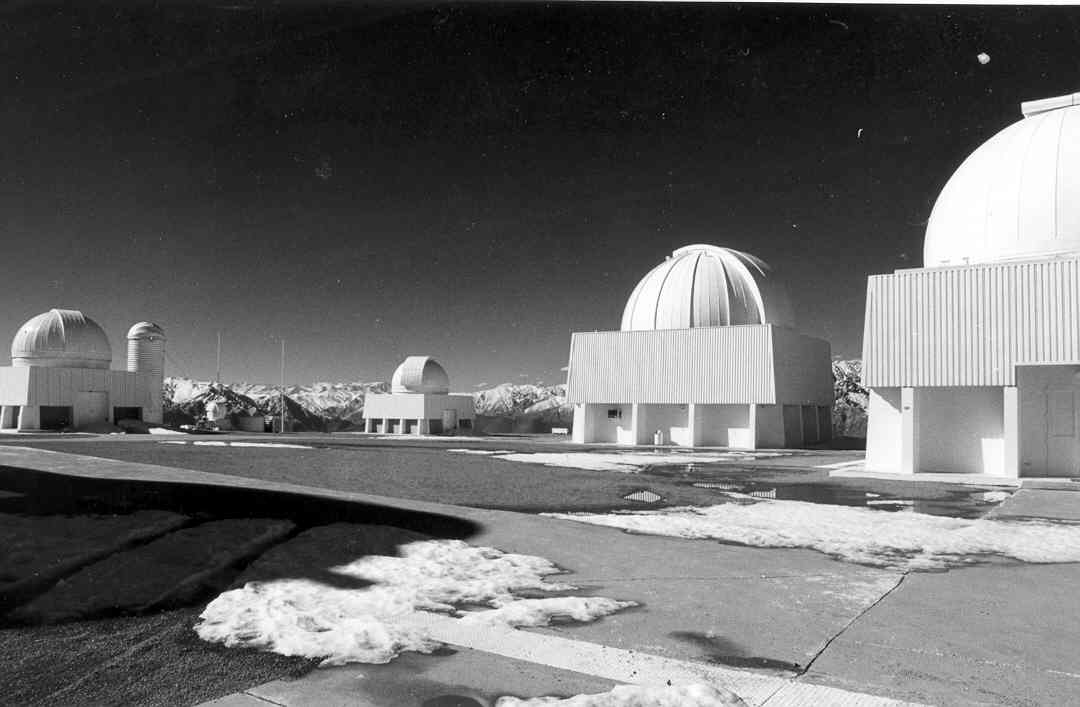
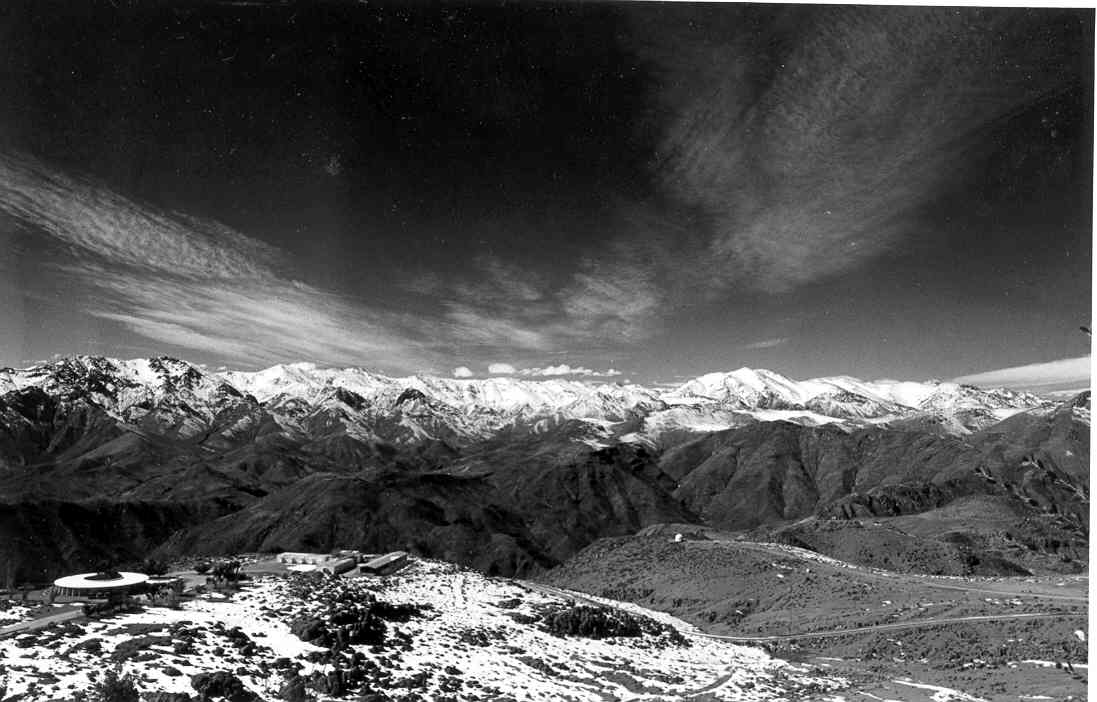
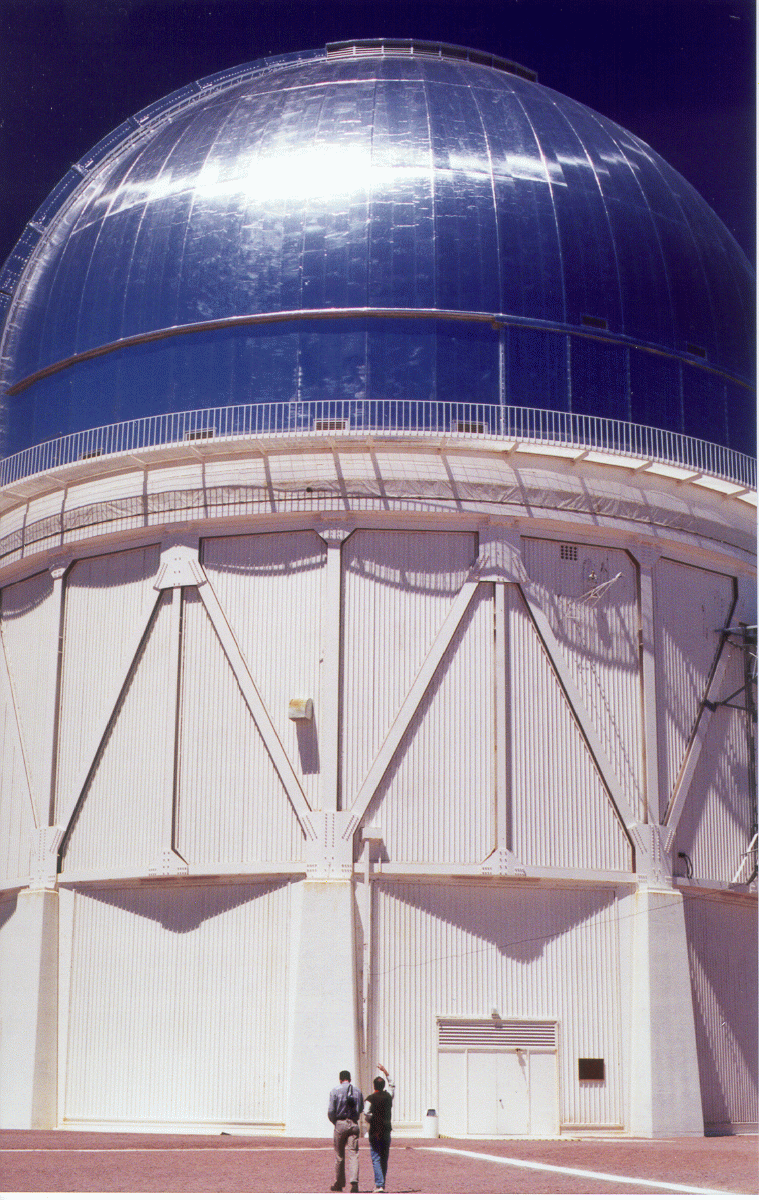
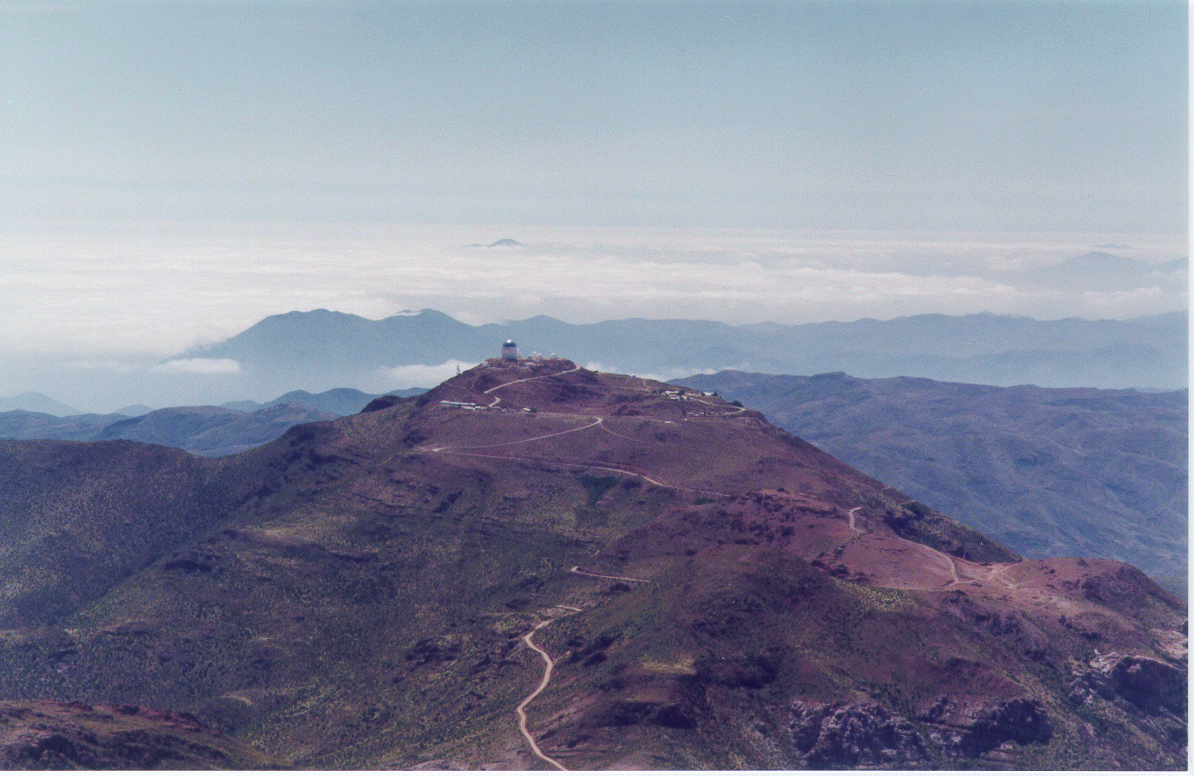
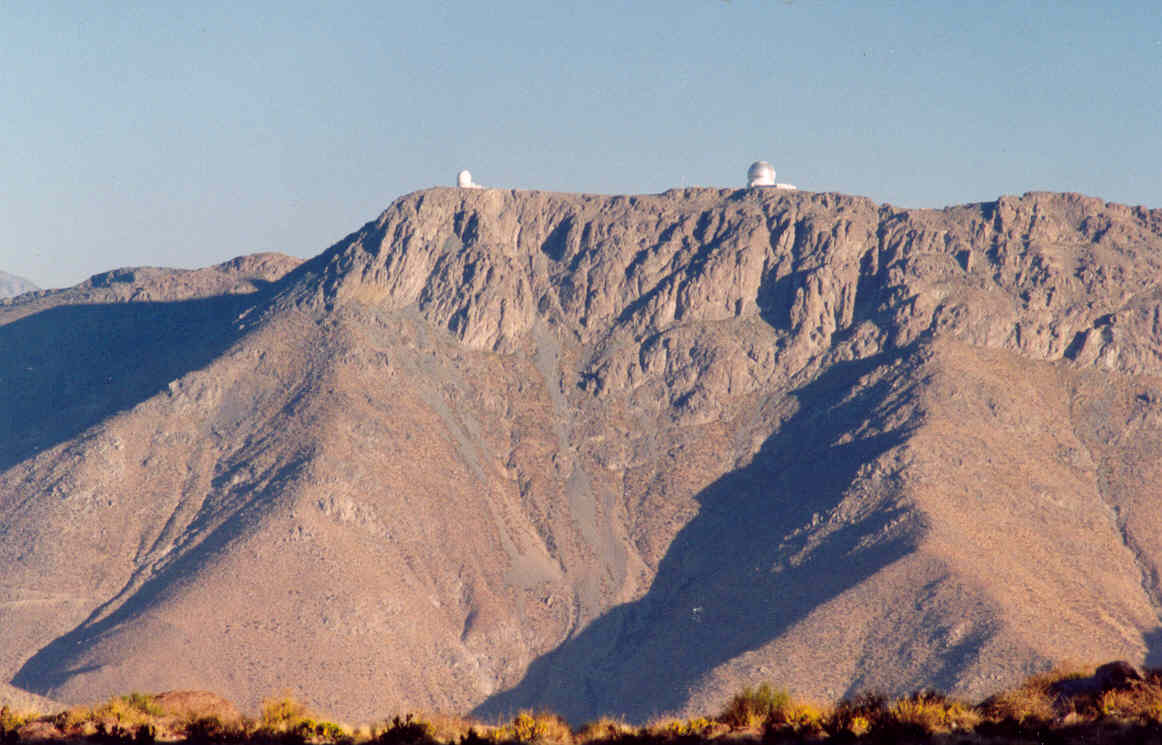
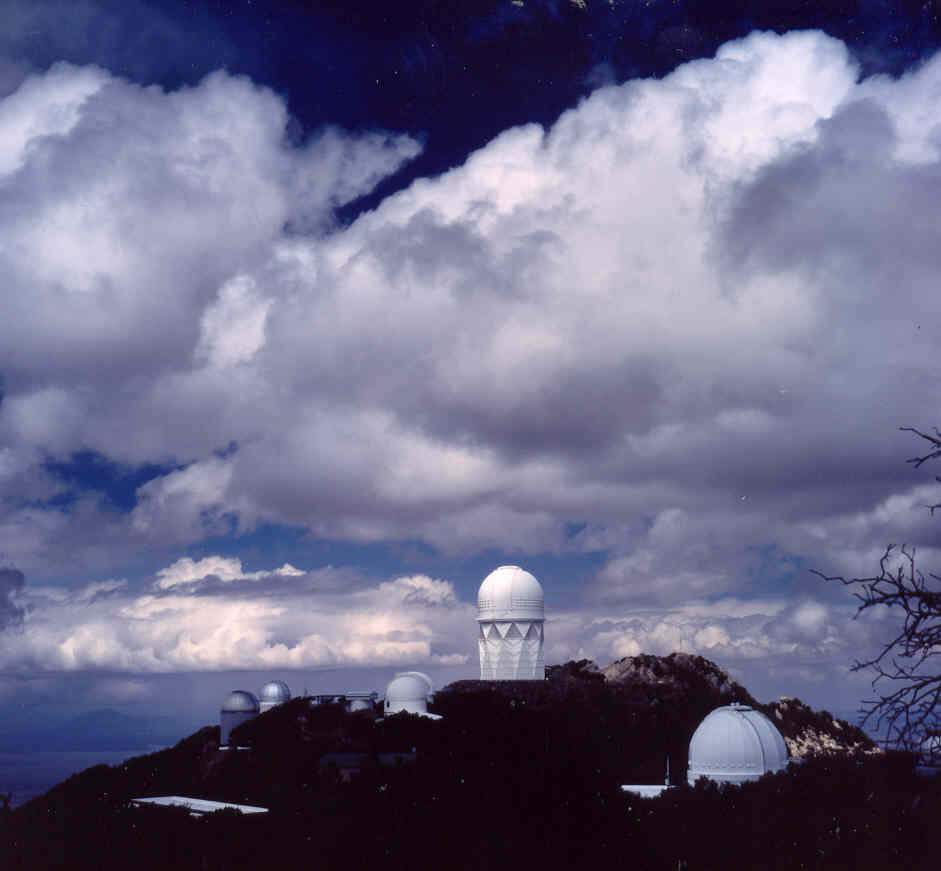
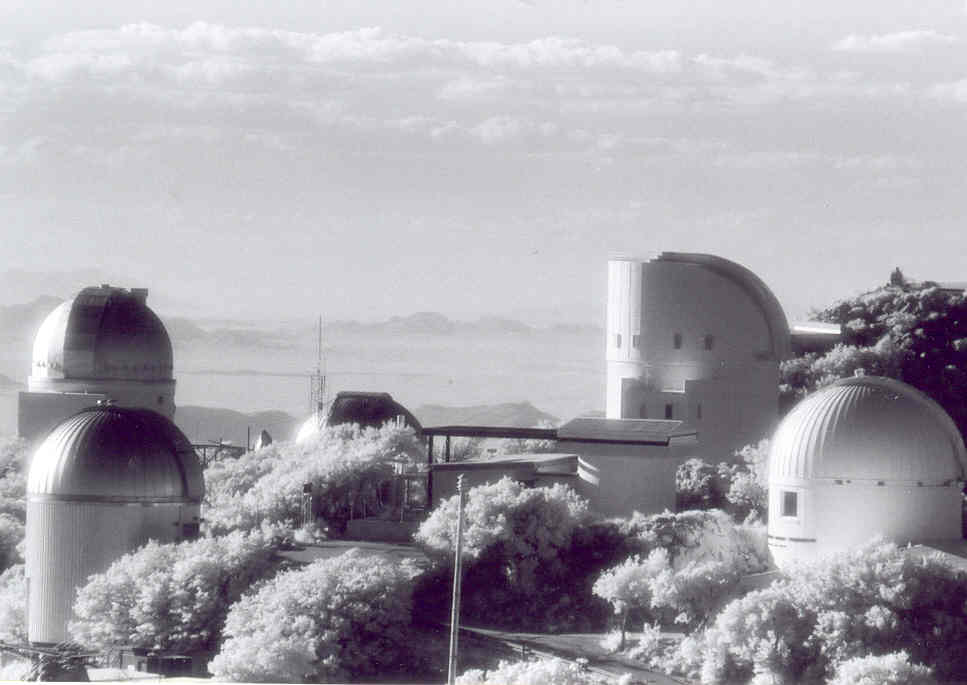

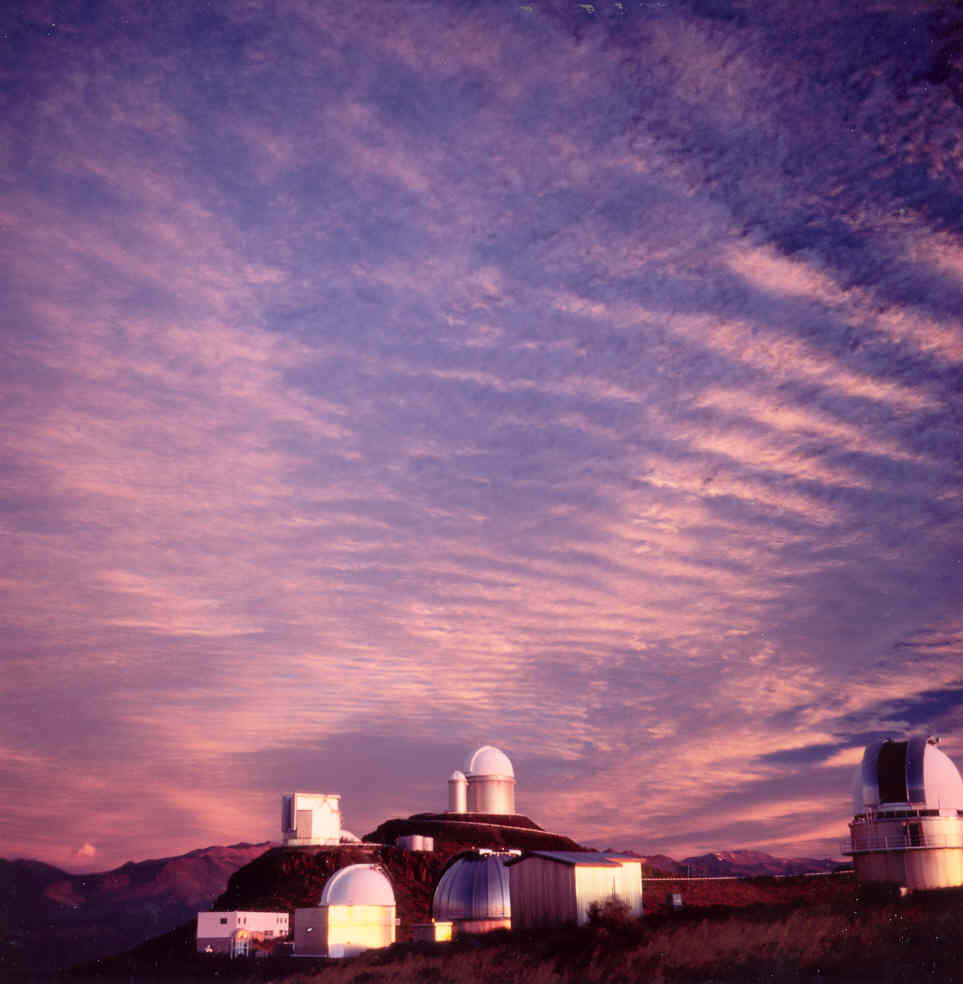
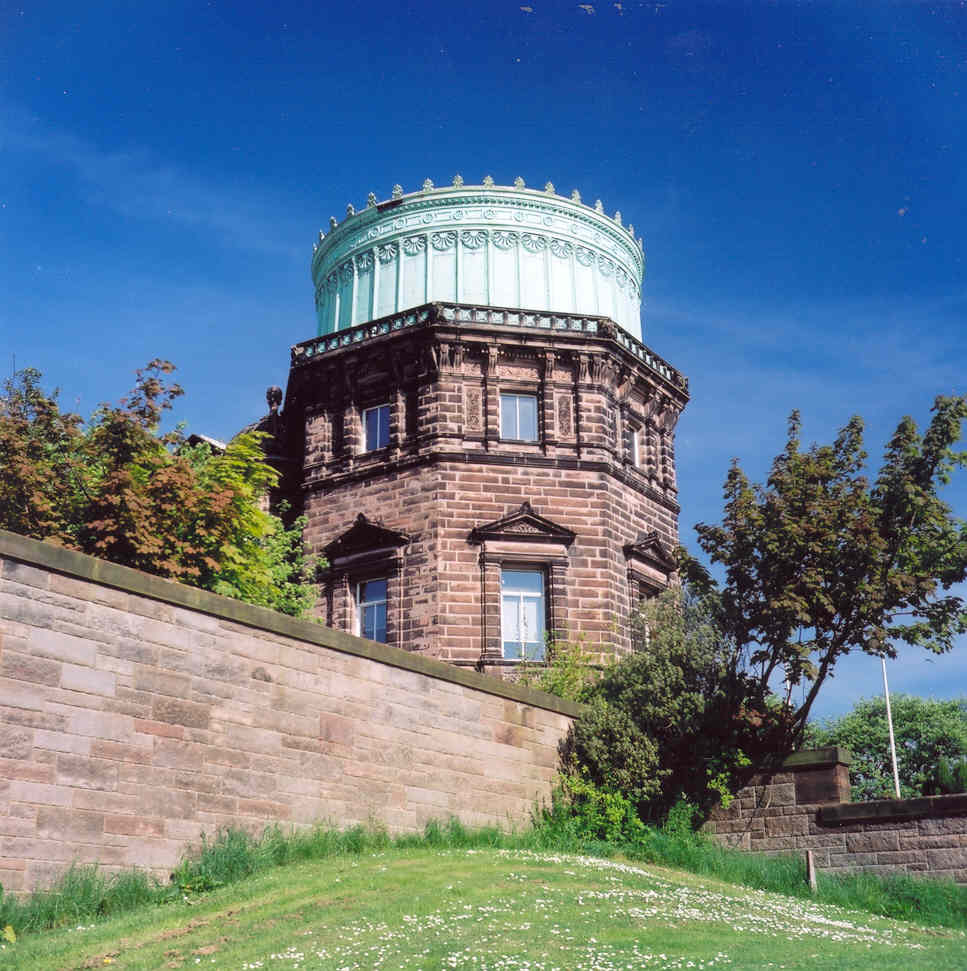
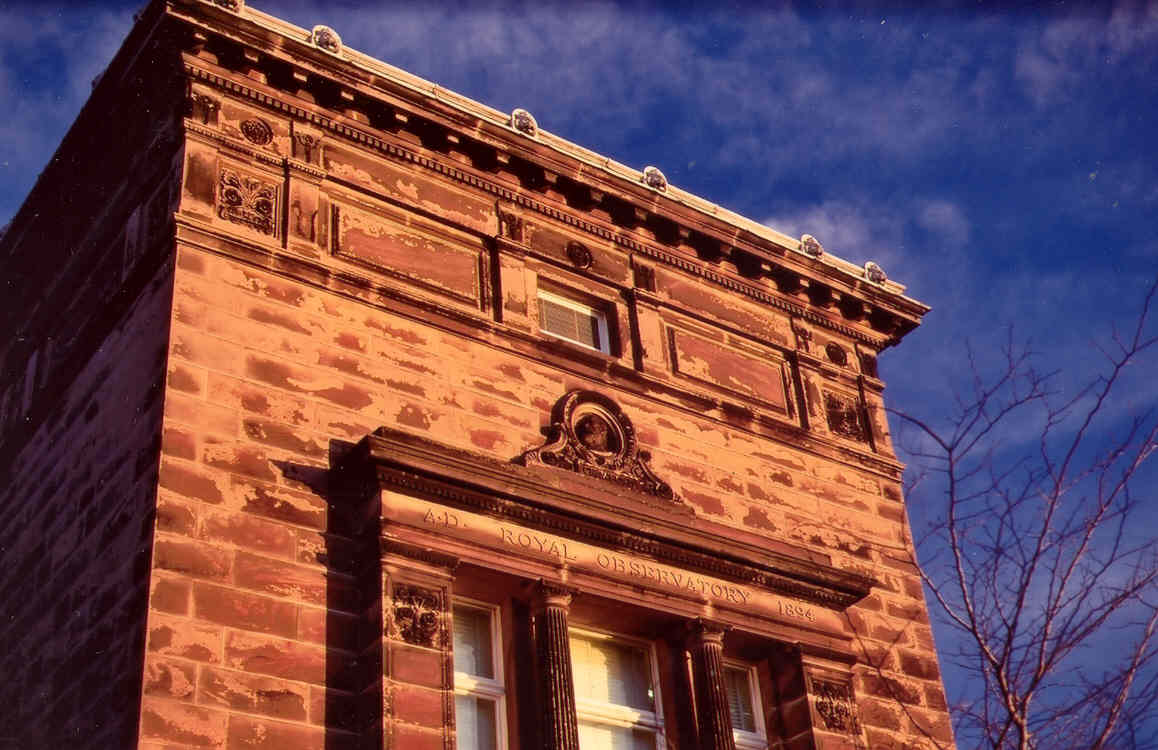
Astronomers, especially observational astronomers, tend to be found in a limited number of places around the world. This is partly because there are so few in the profession to begin with; and partly because (for obvious reasons) they show a preference for places with few clouds and steady air. Below are some notes on places my astronomical travels have taken me.
 |
 |
| Cerro Tololo Interamerican Observatory is located in the western foothills of the Andes Mountains, in northern Chile. (Click on the pictures for larger versions.) Several telescopes stand on the mountain itself, including the four-meter Blanco (left below), the 1.5m, 1.3, 1.0, 0.9 and the 0.9/0.6m Curtis Schmidt. Four of the smaller telescopes are being run by the SMARTS consortium; you can look inside their domes here. | |
 |
 |
 |
Cerro Pachon, just to the east of Cerro Tololo, is home to two new telescopes: the eight-meter Gemini South (on the right), operated by a seven-nation team, and the four-meter SOAR (on the left). |
| Kitt Peak National Observatory(below), outside Tucson, Arizona, has many more telescopes than Cerro Tololo. They are led (below left) by the four-meter Mayall, which is very similar to the Blanco. | |
 |
 |
| La Silla Observatory, located about one hundred kilometers north of Cerro Tololo, is operated by the European Southern Observatory. There is a variety of telescopes on the mountain, led by the 3.6m and the 3.5m New Technology Telescope. | |
 |
 |
| The Royal Observatory, Edinburgh is not in a location known for its clear skies or steady weather. In fact the telescopes on site are used sometimes for initial testing of new instruments eventually destined to do their work elsewhere; and sometimes for people just to look through. This underlines the fact that, for every night spent gathering data on a mountaintop, many weeks are spent designing and building the telescope and instrument; planning and proposing the observations; reducing and correlating the data; and fitting it in with other observations and with theory. (And Scotland can be quite a pleasant change from the desert.) |  |
 |